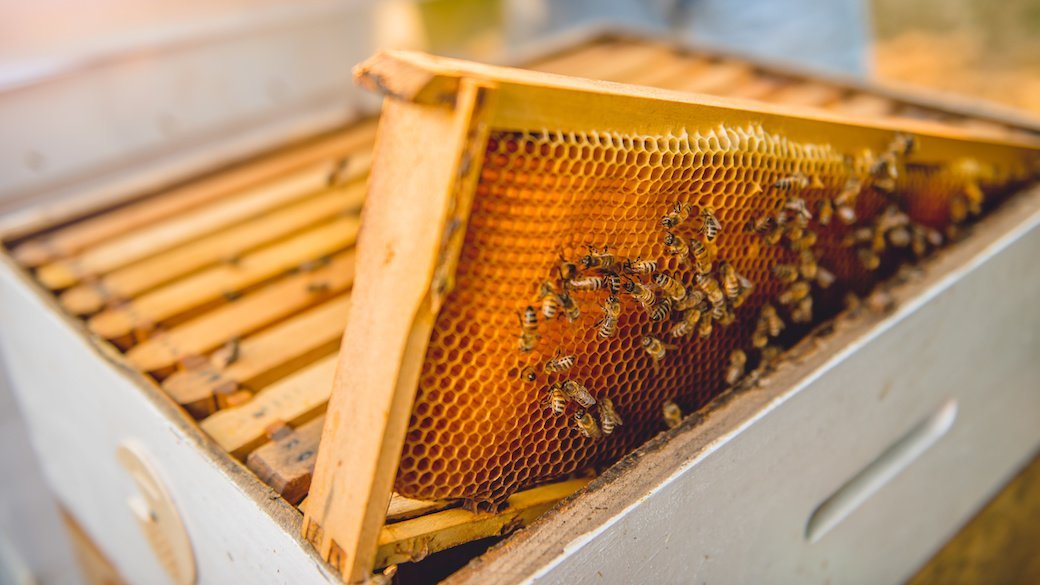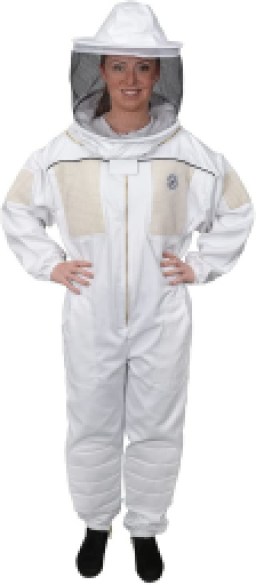Buying guide for best beekeeper suits
If you think bees are just summer pests, think again. At least 30% of the world’s crops and 90% of wild plants flourish because of these hardworking insects and other pollinators. Many food crops would die without them. Keeping bees is big business in the U.S., but it’s also a hobby that’s growing in popularity. You can now find beehives in suburban backyards and on city rooftops as apiarists tend bees for the enjoyment – and the honey.
Humans have been raiding hives for millennia and tending hives for thousands of years without protective gear, and even now the most experienced apiarists don’t always need it. But if you’re a beginning beekeeper or you’re allergic to bee venom, you will want a beekeeping suit to protect your skin from beestings, and some suits are better at doing this than others.
There are other important factors to consider, too, so if you’re in the market for a beekeeping suit, we can help guide you through the options so you can choose the best one for your needs.
Why wear a beekeeping suit?
A beekeeping suit is a protective head-to-ankle garment worn over the clothing by beekeepers when tending to their hives. The fabric, which can be thick, thin, or multilayered, is designed to protect against beestings. Elasticized cuffs and ankles prevent bees from entering. A hat and veil attached to the suit keep bees from stinging the face and neck.
To protect your face and body from stings: This is the main reason people wear bee suits. Some people are allergic to bee venom, and in some cases, beestings can be fatal. Protecting yourself is always a good idea. Ideally, a beekeeping suit should be loose enough to enable you to move freely. The loose fit also leaves pockets of air that help to keep stingers away from your skin. A suit that fits tightly against the body doesn’t offer as much protection against stings, and it can also be hotter to wear.
To enable you to remain calm and focused: Even if you like bees and enjoy working with them, it’s ingrained in humans to be afraid of critters with venom. If you know you’re protected, you can work around the hive slowly and quietly and the bees won’t feel threatened.
- To protect the bees: Bees lose their stingers and die when they attack. Alarmed or angry bees attack dark colors, and the mesh covering your face is the darkest color on a beekeeping suit. The mesh is designed to help bees retain their stingers and have a better chance of surviving an attack.
Types of beekeeping suits
Full-length jumpsuit
This bee suit resembles loose-fitting coveralls and covers the entire body, from neck to wrists and ankles. It is secured with elastic, Velcro closures, and/or zippers. It may have an attached hood or zippers for attaching a veil or hood. Look for a suit that’s easy to get on and off, with plenty of pockets for your tools, and loops that go over your thumbs to keep the sleeves from sliding up your arms. Reinforced sleeves add another layer of protection. Reinforced knees are a real plus – you can kneel on the ground without worrying about tearing a hole in the suit. Some bee suits also come with gloves and boots.
Jacket or smock
A beekeeping jacket looks like a parka with a zipper closure. Beekeeping smocks pull over the head like a very large sweatshirt. These garments are more convenient to don and remove than a full bodysuit and are intended to be worn over your clothes. Many come with a removable hood and veil, attached by a zipper. Jackets often have plenty of pockets for your hive tools. If you opt for a jacket or smock, make sure that your pants are also white or light colored and bees can’t reach you at the ankle or waist.
Did you know?
A well-tended hive can produce 100 pounds or more of honey beyond what it needs to survive.
STAFF
BestReviews
Beekeeping suit features to consider
Fabric
Cotton: Some beekeeper suits are made of thick cotton or a polyester-cotton blend in a special weave that defends well against stings. However, it can be warm in the summer or in a hot climate. Beekeeping suits made of heavier cotton may offer extra protection from bee stings, but lightweight materials are more comfortable and provide ample protection.
Nylon: Because nylon is slippery, bees can’t land on it to sting you. The downside is that nylon is less breathable than cotton, and you’ll get sweaty if you’re working with your hives on a warm day.
Mesh: Newer beekeeping suits, also called ventilation or aerated suits, are made of several layers of breathable synthetic foam mesh to provide an air gap that is longer than a bee’s stinger. This enables the suit to provide excellent protection against stings while allowing air to flow to keep you cooler in warm weather. If you live in a hot climate, you will probably want an aerated suit.
Hat and veil
The veil is a very important piece of protective gear – especially for beginners. It’s a breathable mesh panel that hangs down past the shoulders that enables you to see what you’re doing while protecting the skin on your face, nose, mouth, and neck. More experienced beekeepers may just wear a hat and veil with regular clothing. You can choose from three types of veils:
Round veil: This traditional type of beekeeping veil hangs from the brim of a round hat. The advantages are that it offers good ventilation, keeps bees far from your face, and provides excellent peripheral vision.
Fencing veil: So named because it resembles the steel mesh mask worn by fencers, this is a newer style of veil (also called a collapsible or self-supporting veil). It provides minimal contact between the head and veil, and it doesn’t mess up the hair the way a hat can.
Square veil: This veil looks a bit like wearing a mesh box on your head. It also provides good ventilation and peripheral vision, and it folds flat for storage.
Gloves
Good-quality gloves prevent stings on your hands, as well as keep your hands clean. They should extend well past your wrist. The material should be durable but provide enough dexterity to be able to work with the hive while not inadvertently injuring the bees. Very experienced beekeepers may not wear gloves at all, choosing to risk stings in order to protect the bees while performing certain tasks.
Boots
Your feet and ankles are vulnerable to beestings, too. Bees sometimes fly low to the ground, and some hive entrances might be at ground level – bees will often attack first at the level of the entrance. Beekeeping supply houses sell white boots made of PVC, but leather, rubber, or another heavy material will work just as well as long as the boots extend above the ankles.
"The first protective clothing for beekeepers was developed in Europe in the 1500s. It resembled a long robe-like garment with a hood and woven or wicker covering for the face."
STAFF
BestReviews
Other factors
Security and durability: Your suit needs to have good-quality elastic around the wrists, ankles, and waist to keep the bees out and prevent the suit from riding up and giving bees a chance to get in. Seams should be securely stitched – the last thing you need is a gaping tear amid a swarm of unhappy bees. A thick, reinforced collar will provide extra protection for the delicate skin on your neck. Zippers should be dependable – brass or some other metal is more durable than plastic – and have large enough ring tabs that you can pull them even while wearing gloves.
Fit: You want a suit that isn’t too tight or too big, but you do want your entire body protected as you bend and move around. Most suits come in sizes ranging from XXS to XXXL, and most manufacturers provide helpful sizing charts.
Color: White or a pale color is best. Bees are attracted to bright colors (think flowers!), and dark colors like brown or black signal danger. Bears, skunks, and other bee predators are brown or black, so dark-colored clothing could make the bees likelier to attack. Bees won’t see you as an aggressor if you wear white, and it will help keep them calm as you work.
Care: It’s important to clean your bee suit after you wear it, or at least regularly, especially if bees have tried to sting you. Stingers continue to release attack pheromones, which could provoke other attacks the next time you wear it.
Case: Some beekeeping suits come with a convenient carrying case.
Warranty: A good-quality bee suit can be quite an investment, and some come with a full replacement or money-back guarantee if you aren’t happy.
Caution
A worker bee’s stinger is really two barbed lancets that saw into and catch on the skin. When the bee pulls away, the stinger rips out of her abdomen and she dies soon after. The stinger continues to pump venom into the skin for up to a minute.
STAFF
BestReviews
Beekeeping suit prices
Prices for beekeeping suits vary widely, ranging from $20 to $300 and up. If you’re a novice or don’t plan to wear the suit frequently, you can probably get away with a less-expensive suit, but you get what you pay for. A flimsy suit that tears easily or doesn’t secure tightly around the wrists won’t be much more protection than regular street clothes. That said, there are good deals on durable suits for $40 to $70. Jackets with veils range from $13 to over $200.
Tips
If you get stung, rinse the area with vinegar to minimize the effect of the pheromones and help prevent other bees from attacking you.
Move slowly, gently, and calmly around bees. Bees don’t want to sting you. If they do, they lose their stingers and die. By wearing light colors, remaining calm, and moving slowly, you can help prevent beestings and protect your bees.
Check the care instructions before cleaning your bee suit. Some are machine washable, but others must be hand-washed.
FAQ
Q. How do I know what size bee suit to buy?
A. You want the suit to fit loosely over your clothes. If it’s too tight, the bees might be able to sting through it and reach your skin. Too big and it will just be too cumbersome. For the best fit, measure your body:
Ankle to collar for length
Chest, waist, and hips for width
Inseam for comfort as you move and bend?
Add about an inch to each measurement, or order a suit that is a size or two larger than your measurements.
Q. What kind of gloves do I need?
A. Beginners or apiarists with more aggressive bees should wear canvas or leather gloves (goatskin or cowhide) that extend well up the arm. If your bees are docile, you might be able to wear nitrile rubber gloves, which are thin and flexible but provide less protection against stings. Women should bear in mind that most beekeeping gloves are sized for men, so you might need extra-small gloves even if your hands are of average size.
Q. Do I really need to buy special white knee-high boots to wear with my suit?
A. No. You can wear ankle-high boots and still keep bees from crawling inside your pant legs by tucking the cuffs into your socks and boots or securing your cuffs with rubber bands or Velcro boot straps (sold by beekeeping supply vendors) wrapped outside the boots. You can also wear rubber rain boots or leather boots. Just avoid wearing tennis shoes or other low shoes that leave a gap between the cuff and shoe.



























